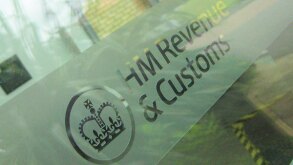Introduction
For the past five editions of China – Looking Ahead, we have plotted the expected path of China's value added tax (VAT) reforms, while waiting with bated breath for their actual implementation.
On May 1 2016, the wait ended with the final stage of the VAT reform programme commencing. This marked the day that the business tax (BT) ceased across all industries nationwide, and all sales and importations of both goods and services into, within, or from, China fell within the scope of a single indirect tax system, being VAT.
While the period between the government's formal release of the VAT reform policies and their implementation was spectacularly short by international standards, approximately five weeks, business did not come to a grinding halt and the government's famed "Golden Tax System" did not buckle under the weight of user overload. Frankly, people in China did what they are accustomed to doing in many other aspects of their life – they set about adapting and implementing change as best they could.
The experience gained from the VAT reforms should serve as a valuable case study in tax implementation to treasury officials and tax authorities around the world. The policies were carefully considered, the major impacts had been largely predicted, taxpayer support was rolled out with phenomenal speed, and businesses and consumers alike responded well.
To put these changes into context, the total number of new VAT taxpayers is approximately 10 million. The reforms resulted in a fundamental shift in the system of tax collection and administration from local governments to the central government, and the last stage of the reforms introduced the world's leading policies to address previously intractable problems. This is not to suggest that all taxpayers were happy, nor is it to suggest that the reforms were implemented flawlessly. Rather, what was observed was a tax authority willing to listen, adapt and make changes where needed in response to concerns, and where the macroeconomic focus remained on producing a more efficient tax system as a whole, while recognising that not all taxpayers would necessarily have a reduced tax burden.
During the implementation of China's VAT reforms, we saw on display two truisms of tax reform that apply the world over. The first being that change will always be implemented in accordance with the formula of one day less than the maximum available timeframe given, however long that may be. And the second being that the extent of clarity and certainty sought by taxpayers, and their advisers, may always be plotted on a graph that approaches infinity. In simple terms, tax reform can actually be implemented quickly because people will actually meet the challenge and adapt, and the quest for certainty and clarity is insatiable.
Given that the title for this publication focuses on "China – Looking Ahead", it begs the obvious question, so what now?
When answering that question, let us divert for a moment with a small aside. Upon passing the May 1 2016 deadline, and then the completion of the first VAT reform filing period, a number of people were heard asking: "what are you going to do now?" Their question presupposed that having implemented VAT in China over the past five years, there would be no further VAT work required. The response was to ask them why most companies still have corporate tax managers seeing as though corporate income tax (CIT) had been introduced in China many years ago? The point being, why do we equate the implementation of a relatively new tax such as a VAT with finality, but yet we would never contemplate the same idea with more traditional taxes such as CIT? The obvious answer is that we are not at the end of a road, but rather, at the start of a new journey. In this edition of China – Looking Ahead, let us explore this new journey that lies ahead.
The framework through which we will explore the journey ahead is firstly by looking at those aspects of the China VAT system which, in the authors' opinion, will lead the world. That is, where the changes implemented in China will serve as the model for other countries to follow. Secondly, we will look at those aspects of the China VAT system that will respond to developments occurring internationally.
World's leading policies
China's VAT system contains three key features which, in the authors' view, represent breakthrough policies among VAT/GST systems around the world. Again, this is not to suggest that other countries will rigidly follow these changes verbatim, but rather that they form the backbone of new developments upon which future improvements and enhancements will be made. To use an analogy, they are the equivalent to the development of the first Apple iPhone, but in time subsequent models will be introduced that are better, faster and more powerful.
Application of VAT to the financial services sector
The first key feature is the application of VAT to the financial services sector.
Historically, most VAT/GST systems around the world have exempted financial services from the tax, primarily because of the difficulties in measuring the value added on a transaction-by-transaction basis. However, exemption raises its own problems, with issues such as cascading liabilities in business-to-business (B2B) financial services, the bias against outsourcing, and the reduced tax base arising from the non-taxation of profit and labour of financial intermediaries. More recently, industry developments such as Fintech, virtual currencies, new payment systems, and peer-to-peer lending have also highlighted practical difficulties in terms of where to draw the line between exempt financial services and other taxable services – a problem which is likely to suggest that the model of VAT exemption is inapt in a modern financial services world.
Countries such as New Zealand made some inroads into trying to tax certain financial services by applying GST to general insurance policies, effectively by adopting a cash-flow basis of taxation. Then others, such as South Africa, Singapore, Australia and Malaysia, followed by taxing financial services that are remunerated on a fee or commission basis. New Zealand chimed in again by zero-rating B2B financial services to remove the cascading effect. Meanwhile, in Australia, the use of reduced input credit intends to offset the bias against outsourcing.
Where China's VAT system has made a huge leap forward is in the introduction of a model where the default position is the taxation of financial services. More specifically:
Interest income is subject to VAT;
Fee and commission-based income is subject to VAT;
Net gains from trading in financial products are subject to VAT; and
General insurance products are subject to VAT.
Critics may point to aspects of the Chinese VAT treatment of financial services which are impure or imperfect, such as the inability to claim input VAT credits for interest expense, the inability to claim input VAT credits for losses from trading in financial products, and the inability to claim input VAT credits for cash settlements of general insurance claims, and argue that China's VAT system for financial services is not, in substance, a true VAT. Certainly, aspects of these policies depart from pure VAT principles and in reality, can start to resemble aspects of the former BT system, or even a capital gains tax in their application. However, what this overlooks is that the VAT rate for financial services is 6%. This is a far cry from the general VAT rate in China of 17%, and therefore it may be contended that the reduced rates act as a kind of proxy or estimate to counteract the effect of a disallowance of certain input VAT credits.
The early experience with these policies highlight that although it is certainly possible to apply VAT to the financial services sector, and indeed, to apply it to most types of financial services, the quest for equity, efficiency and certainty will still continue, albeit with new policy challenges arising. The well-known inequities associated with exempting financial services are replaced with new inequities associated with taxing financial services, but with the difference now being that the tax base is broader. Some of the new policy dilemmas that have been highlighted by taxing financial services are:
The need to provide exemptions for 'wholesale' funding to prevent a cascading of VAT liabilities arising from an inability to claim input VAT credits for interest expenses. This problem was highlighted early and largely rectified quickly with the release of Circular Caishui (2016) 70 (Circular 70). Having said that, the ultimate goal should be to allow a credit for interest expense in all B2B transactions, which would remove both the cascading effect and any real need for interbank exemptions, although practical invoicing issues would still need to be resolved;
The differential treatment of debt versus equity, and even differences in VAT treatment between varying types of debt and equity. Typically, interest paid on debt is subject to VAT, though many types of bond trading activities are now exempted under Circular 70. Trading in financial products that includes stocks and other derivatives is subject to VAT on the gain, whereas trading in equity interests, such as shares in unlisted companies, is exempt;
The inability to claim input VAT credits for claims settlement pay-outs in the form of cash, but the seeming ability to claim input VAT credits for the purchase of goods or services used in settling claims. Given that most goods attract a VAT rate of 17%, this creates an obvious incentive for insurers to structure claims settlements by providing goods in kind, rather than cash upon which the insured buys new goods; and
The lack of any general exemption or zero rating for exported financial services. At present, there is a very limited form of exemption for exported financial consulting services only, but for the most part, exports of financial services bear VAT. The absence of any exclusion from output VAT runs contrary to the OECD's International VAT/GST Guidelines, and it has the propensity to cause double taxation, given that the export of the financial service from China may well be taxed in the place of importation, usually on a reverse charge basis, and especially so for many types of fee-based financial services. This lacks international competitiveness.
In time, it would not be a surprise if many of these problems are rectified, recognising that what we have now is VAT version 1.0. Similarly, it would not be a surprise to see governments around the world studying the Chinese experience and attempting their own VAT version 2.0.
In some respects, China's experience with imposing VAT on financial services operates as a useful test case. The financial services sector in China is heavily dominated by state owned enterprises and there is a heavier concentration of revenue from financial services drawn from relatively simple lending activities as compared with other markets. In addition, the general regulatory environment is in some respects more tightly controlled, except perhaps for shadow banking, with a greater ability to influence outcomes through government intervention. So in conclusion, even though the application of VAT to financial services in China is modified, impure and perhaps imperfect in some respect, the experience in China shows that it is certainly possible.
Taxation of B2B, B2C and even C2C transactions
Virtually all major VAT/GST systems around the world share certain common features:
They define what constitutes a supply (i.e. goods, services, or rights);
They require the place of supply to occur in that jurisdiction as a precondition to the imposition of VAT/GST;
They calculate the VAT/GST based on the consideration payable for that supply; and
They impose the obligation to collect and remit the VAT/GST on entities in respect of "commercial activities".
For the most part, this means that businesses collect and remit the VAT/GST, and then depending on the jurisdiction, they either include or exclude from the scope of the VAT/GST activities of passive investors (e.g. property landlords), one-off traders and speculative investors (e.g. those carrying on an adventure or concern in the nature of trade), as well as charities and governments.
What makes the Chinese system unique is that the distinction between "commercial activities" and "non-commercial activities" is almost never drawn. Instead, the distinction is more often drawn on the basis of turnover thresholds (e.g. paying VAT on a simplified basis at 3% if the annual turnover from services that have recently transitioned from BT to VAT is less than RMB 5 million ($723,000)) or between "individuals" and "non-individuals".
In the authors' view, drawing distinctions between commercial activities and non-commercial activities is a concept that will gradually become an historical anecdote in other VAT/GST systems around the world. The birth of the sharing economy, in areas such as accommodation and travel with companies such as AirBnB, Uber and Didi Kuaidi, highlights the increased mobility in which business can be carried on. The growth of online platforms such as Etsy, which can allow an 80-year old grandmother to sell her art and craft wares to an international market, the dominance in China of Alibaba's B2B and business-to-consumer (B2C) T'Mall platform and its B2C and consumer-to-consumer (C2C) Taobao platforms, coupled with the growth of peer-to-peer (P2P) lending, all show the rise of the intermediary in facilitating transactions between active buyers and willing sellers.
China's VAT system is believed to be among the first to impose VAT on C2C transactions, including in the real estate sector. With effect from May 1 2016, transactions involving not only commercial real estate but also residential real estate attract VAT. In addition, transactions involving not only newly developed real estate assets but also second-hand real estate assets attract VAT, and transactions involving not only B2B and B2C, but also C2C attract VAT. While the VAT rates can vary depending on some of these features, and some exemptions do apply, the simple point is that the tax base in China for VAT prima facie includes C2C transactions. That appears to be a world first. After all, provided the taxpayer has met the requisite turnover threshold and has added value, should it really matter whether the label on the type of activity is that of a "commercial activity" or not?
The challenge for governments around the world is to ask whether their VAT/GST systems are fit for the modern way in which consumers will buy goods and services, and whether there is anything in China's system that may serve as a blueprint to help them meet that challenge.
China's Golden Tax System
The final, and perhaps most controversial feature, is China's Golden Tax System. This is the hardware and software system upon which invoices are issued and received (or validated), and where transactional data is stored for later transmittal to the tax authorities. The importance of China's Golden Tax System to VAT and to the economy generally simply cannot be understated. It is often joked that the first words that a foreign businessperson learns upon arriving in China is not ni hao but is instead fapiao, meaning invoice.
Most countries' VAT/GST systems place considerable importance on invoicing in the operation of their system, but few place as much importance as the Chinese. Invoices in most countries serve the purpose of providing persuasive evidence that a transaction has occurred and the way in which it has occurred. However, in China, the fapiao virtually fulfils the role of being determinative evidence.
The controversial aspect is that despite multiple anti-counterfeit features of China's Golden Tax System, according to certain OECD studies, the VAT gap (being the difference between VAT revenues that should be collected and what is actually collected) in China is exceptionally high by international standards. The OECD has estimated that the VAT gap in China represents around 55% of all VAT revenue. While estimations of the VAT gap are by definition difficult to verify, it has been said by some international experts that by placing the invoice or fapiao at the core of its tax system, this perversely creates a system which rewards 'off record' transactions or even fraudulent invoices. Put simply, if the fapiao was not all that important, then the production of fraudulent invoices would become less useful. Similarly, if the issuance of a fapiao did not result in a transaction record being conveyed to the tax authorities, the failure to issue a fapiao would not create the perception that tax can be evaded. This does not mean to suggest that VAT may be avoided by the failure to issue a fapiao. The Chinese VAT rules make very clear that VAT is payable irrespective of this. Rather, the common perception in the general community is that this is the case.
These arguments, while reasonably valid, overlook three key points. First, until May 1 2016 there was a significant gap in the system, whereby transactions involving either a liability to BT, or to a BT taxpayer, resulted in no VAT fapiao being issued. However, that has now changed. The chain of invoices is now intact because all taxpayers are under the VAT system. It is expected that the VAT gap should therefore reduce considerably.
Second, it overlooks technological developments. China's Golden Tax System is moving in the direction of a fully electronic era. Electronic invoicing is gradually being introduced and should be widespread within the next two years and the system itself is automatically uploading importation records to enable the importer to claim an input VAT credit. In addition, the previous system, requiring manual verification of invoices, is similarly becoming automated with the taxpayer scanning and loading invoices for which it is claiming input VAT credits and the tax authority's approved software is automatically verifying them. Put simply, China has the hardware in place upon which it can make upgrades into the future. It is not difficult to foresee when VAT will be collected and remitted at the point of sale, and similarly credited automatically in B2B transactions. Compare that to (most) governments without any form of government authorised or mandated hardware in place.
Third, data and analytics is increasingly becoming the tool of trade for 21st century tax administrations. China's Golden Tax System means that the government has the data, but they just need to learn how to analyse it. Compare that to, again, (most) governments that have neither the systems nor resources in place to obtain the data, except in response to the detection of risks or following a specific request.
In 2016, KPMG launched the "Tax Intelligence Solution" in China, which is a data and analytics solution that allows businesses to obtain key insights into data from their enterprise resource planning (ERP) systems. At the click of a button they can obtain reports that highlight anomalies such as domestic sales without VAT, multiple tax codes used by the same supplier, transactions in which no tax codes have been assigned, a virtual toolbox of over 60 data and analytics tests specifically designed or adapted for China's VAT system, which help businesses to detect tax risks and to identify opportunities. Now, imagine such a tool in the hands of the tax authorities, and especially where they already have the data.
Policies that will respond to international developments
While this chapter has so far concentrated on how China's VAT system will lead developments internationally, it would be unbalanced not to point out those aspects of the system that will respond to international developments. In that respect, it must be remembered that China is still, in many respects, a developing economy, and its fully fledged VAT system is still in its infancy.
The following represents key areas where change is expected, or perhaps is hoped for, over the coming few years.
B2B 'wash' sales
The principle of fiscal neutrality, which is embedded in the OECD's international VAT/GST Guidelines (the guidelines), recognises that VAT is not intended to be a cost on business. According to guideline 2.1, "the burden of value added taxes themselves should not lie on taxable businesses except where explicitly provided for in legislation". The guidelines then seek to provide examples where exceptions may apply, such as for the denial of input tax arising from exempt activities, or non-business activities.
A number of countries implement the fiscal neutrality principle in such a way that typically seeks to ensure the amount of output tax payable by a business supplying a good or a service in any given transaction equals the amount of input tax claimable by a business purchasing that good or service for use in their taxable business activities. The principle of fiscal neutrality can be called in aid of taxpayers in a range of situations, including:
Where the VAT treatment adopted by the supplier and the recipient in the first instance was zero-rated or exempt, but the tax authorities later asserted the transaction should have been subject to VAT. The principle of fiscal neutrality may be called in aid to ensure that if the supplier must still remit the output tax at a later point of time, the recipient can still claim the resulting input tax credit;
Where the recipient loses the tax invoice, or fails to obtain it, or simply fails to include the input VAT credit in its correct VAT return, then the principle of fiscal neutrality could be used to correct the anomaly of the supplier's output VAT not being matched by the recipient's input VAT credit, where they are carrying on taxable business activities. Most countries provide some latitude or leniency in terms of alternative evidence used to support the recipient's input VAT credit where in substance they would be eligible for such a credit;
In transactions where there are post-sale price adjustments, such as volume rebates, or third party price adjustments (e.g. manufacturers giving cashbacks to consumers), or even in complex loyalty reward schemes. The VAT/GST systems in many countries recognise that VAT should only ever be imposed on the true 'value added', see for example Elida Gibbs Ltd v Customs & Excise Commissioners (1997), and therefore allow later period adjustments to the supplier's output VAT and the recipient's input VAT; and
In transactions where there is a gift or free giveaway between arm's length parties. The principle of fiscal neutrality would suggest that the imposition of output tax is inappropriate from a policy perspective because the value of the gift is already priced in to the goods or services which the consumer actually pays for.
In each of these cases, China's VAT system would not always achieve an equitable policy outcome. In some respects, this is for historical reasons that reflect a certain 'impurity' to China's VAT regime. For example, before 2009 China's VAT rules precluded input tax being claimed on fixed assets, and until recently the impact of a dual indirect tax system resulted in BT taxpayers being denied input tax for their purchases of goods, and VAT taxpayers being denied input tax for purchases of many services.
With the 2016 shift to a single integrated VAT system in China, it is hoped that in time the recognition of the principles of fiscal neutrality will be more fully implemented.
Exports and imports of services
The VAT position for exports and imports of services in China may be briefly summarised as follows:
Exports of services are typically exempt from VAT where the service is consumed outside of China, though there are some limited categories of zero-rated services; and
Imports of services are subject to VAT with the VAT being collected by the domestic recipient on a withholding basis.
There are two key elements where China's VAT system needs to respond to international developments, as well as to technological developments. They are:
1) The OECD's International VAT/GST Guidelines, which adopt the destination principle of taxation. This is the principle under which VAT/GST should be collected in the destination where the service is consumed, not the place where the service originates. China's VAT rules in Circular Caishui (2016) 36 (Circular 36) fall short of the full implementation of the destination principle. They fall short because they merely exempt most services from VAT – they do not zero rate most services. This means that VAT is effectively still borne by the domestic supplier on their inputs. Furthermore, the categories of exemption in Circular 36 do not 'cover the field'. As mentioned previously, this means that services such as many types of exported financial services bear VAT at 6%, which is internationally uncompetitive. Finally, China's VAT system does not allow foreign businesses to register for VAT and similarly does not allow them to claim refunds, so unlike other countries, there is no viable option to relieve the burden of VAT where exemption or zero rating is not satisfied. This runs counter to guideline 2.4 of the OECD's guidelines.
On a more positive note, it must be remembered that China's previous BT system contained no general category of exemption for exported services, so the VAT system already represents an improvement. Additionally, in November 2015 the categories of zero rating were expanded to include offshore outsourcing services (see Circular Caishui (2015) 118, but now embedded in Circular 36) and it is therefore hoped that this is the start of a more general shift to convert exemptions into zero rating treatment.
2) Increasingly, consumers are purchasing services in a digitised form, which can entail services being provided by offshore suppliers without a physical presence in China. This raises significant problems from a VAT compliance perspective.
Put simply, the VAT system in China is ill-equipped to deal with this phenomenon. In reality, individual consumers bear the responsibility to account for the VAT on a withholding basis, yet in practice they are unlikely to do so because offshore suppliers are not able to effectively register for VAT purposes in China and account for the VAT on behalf of individual consumers. A position that has been made more difficult since the release of Circular 36, which now precludes offshore suppliers from appointing a local agent to collect the VAT on their behalf, and yet the liability for a failure to withhold the VAT is a joint and several liability of both the offshore supplier and the domestic recipient.
The OECD's and G20's report on the digital economy, released as part of the BEPS initiatives, recommends that countries amend their VAT/GST systems to allow offshore suppliers to register and account for VAT/GST, and to allow them to do so in a way that is both efficient and effective administratively. Already several jurisdictions in the Asia Pacific region such as Australia, New Zealand, India, Taiwan, Japan, Thailand and South Korea have either implemented, or are taking active steps to implement, the recommendations of the OECD/G20 report. They have a strong self-interest in doing so, because their tax bases will be detrimentally affected until they do so. For China, the day is fast approaching where similar steps need to be taken, especially given the enormous growth in the use of technology in buying and selling services in China.
While the VAT position in China with respect to exports and imports of services may lag behind international developments in certain respects, the flipside is that China's VAT treatment for imported goods may well be ahead of the pack. In early 2016, China introduced Circular Cai Guan Shui (2016) 18, which effectively applied a 30% discount to the liability to VAT and consumption taxes due on imported goods. It also introduced certain low value thresholds for imported parcels (consistent with OECD recommendations), and it further had the effect of encouraging e-commerce platforms in China.
Single rate VAT system
China's VAT system uses a number of different VAT rates, with 3%, 6%, 11% and 17% in common usage. Even then, the conclusion that there are four general VAT rates in application is itself strictly inaccurate. There are instances where other rates are commonly used too, such as 1.5%, 2%, 5% and 13% to name just a few.
The shift from the previous BT system to the VAT system resulted in an increase in the number of VAT rates. The explanation for the multiple VAT rate system is that the government officials adopted a preference for policies and rates that would preserve, and in some cases reduce, the tax burden impact in the transition from BT to VAT, over policies that would rationalise the number of VAT rates.
The obvious impact of a multiple VAT rate system is that it increases complexity. Take the simple example of a customer choosing to stay at a hotel in China. They may incur:
A 6% VAT on the hotel booking fee;
A 11% or 5% VAT on car parking if they drive themselves;
A 6% VAT on the hotel accommodation and food and beverage;
A 11% VAT for a room hire booking in the business centre;
A 17% VAT on the spa products they consume;
A 11% VAT on the use of the telephone;
A 6% VAT for the use of the internet; and
A 17% VAT when they buy something from the gift shop.
Plainly, a system that adopts a single rate across a broad base is simpler, more efficient and promotes equity between taxpayers. Countries such as New Zealand are known to have one of the broadest based VAT/GST systems in the world, achieved with a single VAT/GST rate.
It is expected that China will take steps to reduce the number of VAT rates over the next few years, as the new VAT system matures and perhaps is accompanied by the enactment of formal VAT legislation.
Conclusions
China's VAT system has the potential to be among the leading VAT/GST systems around the world. It has three key pillars or foundations in place that should prove resilient to technological change and innovation, being:
The taxation of financial services;
A broad base of taxation that also includes C2C transactions; and
The hardware in place to obtain transactional level data through the Golden Tax System, with improvements likely to result in real time data transfers in the near future.
What is needed now is to build on those pillars or foundations by adopting international developments relating to cross-border services, applying the principle of fiscal neutrality, and rationalising the number of VAT rates in effect. Once it has done so, China's VAT system can then be regarded as truly the world's leading indirect tax system.

|
|
Lachlan WolfersPartner, Tax KPMG China 8th Floor, Prince's Building 10 Chater Road Central, Hong Kong Tel: +852 2685 7791 Mobile: +852 6737 0147 Lachlan is the national leader of indirect taxes for KPMG in China, the leader of KPMG's indirect taxes centre of excellence; the Asia Pacific regional leader, indirect tax services; and a member of KPMG's global indirect tax services practice leadership team. Before joining KPMG China, Lachlan was the leader of KPMG Australia's indirect taxes practice and the leader of KPMG Australia's tax controversy practice. Lachlan leads KPMG's efforts in relation to the VAT reform pilot programme in China. In the course of this, he has been asked to provide advice to the Ministry of Finance, the State Administration of Taxation and other government agencies in relation to several key aspects of the VAT reforms, including the application of VAT to financial services, insurance, real estate, transfers of a business, as well as other reforms relating to the introduction of advance rulings in China. Lachlan is formerly a director of The Tax Institute, which is the most prestigious tax professional association in Australia. In this role, he was frequently invited to consult with the Australian Taxation Office and Commonwealth Treasury on tax issues, as well as consulting with government officials from both China and the US about indirect tax reform. Before joining KPMG, Lachlan was a partner in a major law firm, and has extensive experience in a broad range of taxation and legal matters. He has appeared before the High Court of Australia, the Federal Court of Australia and the Administrative Appeals Tribunal, including in the first substantive GST case in Australia. Lachlan is a noted speaker on VAT issues and has also presented numerous seminars for various professional associations, industry groups and clients on the VAT reforms in China. |

|
|
Shirley ShenPartner, Tax KPMG China 8th Floor, KPMG Tower, Oriental Plaza 1 East Chang An Avenue Beijing 100738, China Tel: +86 10 8508 7586 Shirley Shen started her career in 2004 with professional accounting firms in Australia and has experience in various disciplines including tax and accounting. Before joining KPMG in 2007, she worked in the tax department of another Big 4 firm for two years. Shirley has rich experience in advising multinational enterprises. She has been providing tax health checks, tax provision reviews, tax due diligence, and structuring and planning advice. She is also actively involved in the VAT reforms in China by assisting the Legislative Affairs Office of the Budgetary Affairs Commission of the National People's Congress and the Ministry of Finance since 2009. Shirley is a key member of KPMG's indirect tax centre of excellence and is leading the VAT team in KPMG's Beijing office. She has been involved in many VAT reform projects for multinational enterprises and state-owned enterprises and provides a full range of services relating to VAT implementation. She has been instrumental in influencing policymakers on behalf of industries such as the transportation industry, finance leasing industry and financial services sector to achieve improved policy outcomes under the VAT reforms. Shirley is a noted speaker on VAT issues and has presented numerous seminars for various professional associations, industry groups and clients on the VAT reforms in China. Shirley is the vice chair of the finance and taxation working group of EU Chamber of Commerce in China and a member of Certified Practising Accountants of Australia (CPA Australia). She is also a Certified Tax Agent of China and Hong Kong Certificated Tax Adviser. |

|
|
John WangPartner, Tax KPMG China 50th Floor, Plaza 66 1266 Nanjing West Road Shanghai 200040, China Tel: +86 21 2212 3438 John Wang was previously a tax official in the Chongqing Municipality State Tax Bureau, with more than seven years of tax audit and administration experience. John joined KPMG China after completing his MBA courses in the UK in 2004. In his career as a tax consultant at KPMG, John has deployed the knowledge and skills acquired from both his work at the tax authority and his MBA studies in providing advisory services to multinational clients and domestic clients in a wide variety of industries. He has been actively involved in helping companies prepare for the continuing China VAT reform. |

|
|
Jean Jin LiPartner, Tax KPMG China 9th Floor, China Resource Building 5001 Shennan East Road Shenzhen 518001, China Tel: +86 755 2547 1128 Jean has more than 10 years of experience working in China tax practice. She started her professional career in Shanghai, later relocating to Shenzhen. She also worked in the US as a tax professional for the expansion of her business network and greater international exposure. Jean is based in the KPMG Shenzhen office as one of the tax partners of KPMG Southern China. Jean specialises in China corporate tax and indirect tax. She has rich and extensive experience in providing tax and business advisory services for the significant business activities of large state-owned enterprises, for example, investment, outbound, restructuring and M&A deals. Jean is also actively involved in the China VAT reform and has extensive experience in serving many well-known companies in real estate and finance industries. Jean has also actively contributed her insights on the VAT reform from an industry perspective to various tax authorities and government departments, including the China Ministry of Finance. Jean is a certified public accountant and a holder of the lawyer practitioner qualification in China. With her strong accounting, auditing, taxation and legal background, Jean is well known as a China tax expert and is frequently invited as speaker by professional associations (for example, ACCA) and many universities across China. |










